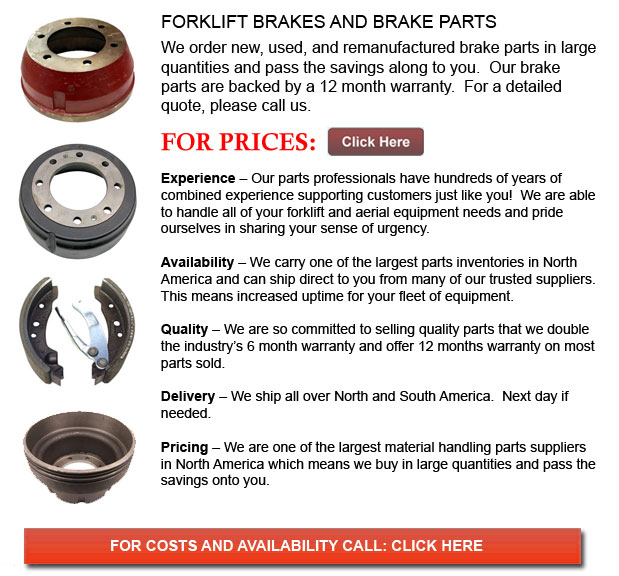
Forklift Brakes - A brake in which the friction is provided by a set of brake pads or brake shoes that press against a rotating drum shaped unit called a brake drum. There are several particular differences between brake drum types. A "brake drum" is normally the definition provided whenever shoes press on the interior surface of the drum. A "clasp brake" is the term used in order to describe if shoes press against the outside of the drum. One more kind of brake, referred to as a "band brake" utilizes a flexible belt or band to wrap round the exterior of the drum. Whenever the drum is pinched in between two shoes, it could be known as a "pinch brake drum." Like a conventional disc brake, these kinds of brakes are somewhat uncommon.
Prior to the year 1995, old brake drums needed consistent adjustment periodically so as to compensate for shoe and drum wear. Long brake pedal or "Low pedal" travel is the dangerous end result if adjustments are not done sufficiently. The motor vehicle can become dangerous and the brakes can become useless if low pedal is combined along with brake fade.
There are quite a few different Self-Adjusting systems designed for braking available today. They can be classed into two individual categories, the RAD and RAI. RAI systems are built in systems which help the tool recover from overheating. The most recognized RAI manufacturers are Bendix, Lucas, Bosch and AP. The most famous RAD systems consist of Bendix, Ford recovery systems, Volkswagen, VAG and AP.
Self repositioning brakes usually utilize a mechanism which engages only when the vehicle is being stopped from reverse motion. This stopping approach is satisfactory for use where all wheels make use of brake drums. The majority of vehicles these days make use of disc brakes on the front wheels. By functioning only in reverse it is less likely that the brakes would be applied while hot and the brake drums are expanded. If adjusted while hot, "dragging brakes" can occur, which increases fuel intake and accelerates wear. A ratchet device that becomes engaged as the hand brake is set is one more way the self adjusting brakes may work. This means is only suitable in functions where rear brake drums are utilized. If the emergency or parking brake actuator lever goes beyond a particular amount of travel, the ratchet improvements an adjuster screw and the brake shoes move toward the drum.
Located at the base of the drum sits the manual adjustment knob. It could be adjusted using the hole on the opposite side of the wheel. You will have to go beneath the vehicle along with a flathead screwdriver. It is really significant to adjust each wheel equally and to move the click wheel correctly for the reason that an uneven adjustment may pull the vehicle one side during heavy braking. The most efficient method in order to guarantee this tiresome job is completed safely is to either lift each and every wheel off the ground and spin it manually while measuring how much force it takes and feeling if the shoes are dragging, or give each one the exact amount of clicks utilizing the hand and then perform a road test.
![]() Click to Download the pdf
Click to Download the pdf
Forklift Parts
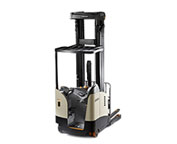
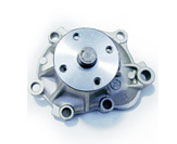
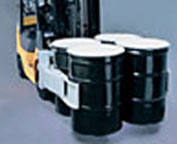
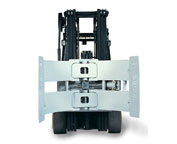
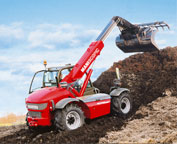
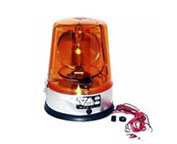
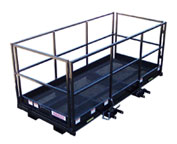
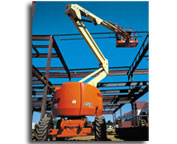
Lift Parts Express
TOLL FREE: 1-888-695-7994
Newark, New Jersey
forkliftpartsnewark.com
Email Us
About Us


